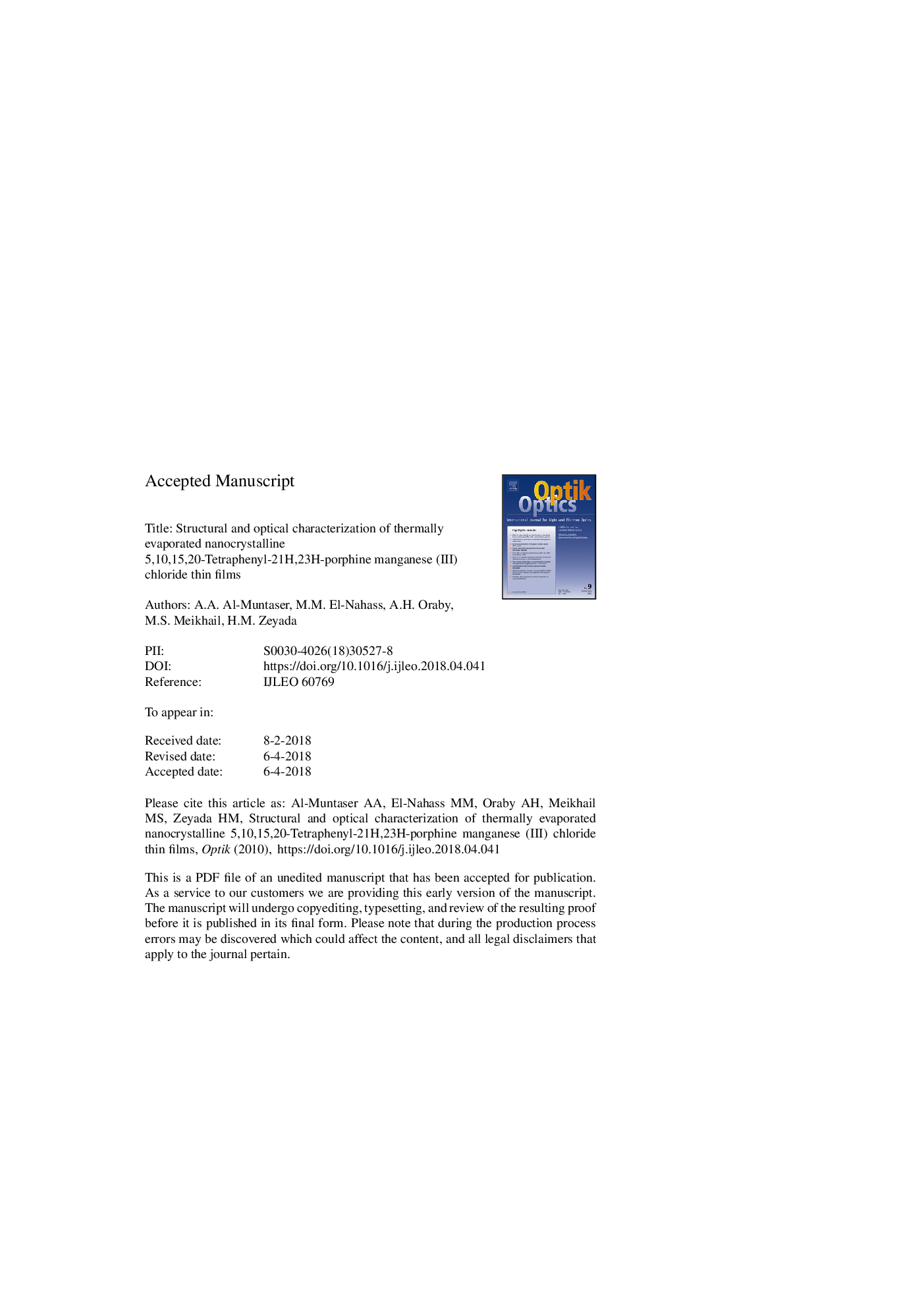| کد مقاله | کد نشریه | سال انتشار | مقاله انگلیسی | نسخه تمام متن |
|---|---|---|---|---|
| 7223630 | 1470560 | 2018 | 42 صفحه PDF | دانلود رایگان |
عنوان انگلیسی مقاله ISI
Structural and optical characterization of thermally evaporated nanocrystalline 5,10,15,20-tetraphenyl-21H,23H-porphine manganese (III) chloride thin films
دانلود مقاله + سفارش ترجمه
دانلود مقاله ISI انگلیسی
رایگان برای ایرانیان
کلمات کلیدی
موضوعات مرتبط
مهندسی و علوم پایه
سایر رشته های مهندسی
مهندسی (عمومی)
پیش نمایش صفحه اول مقاله

چکیده انگلیسی
Thin films of 5,10,15,20-Tetraphenyl-21H,23H-porphine manganese (III) chloride, MnTPPCl, were successfully deposited by thermal evaporation technique. The structure of thin films was characterized using Thermal Gravimetric Analysis, TGA, Fourier Transform Infrared, FTIR, X-ray Diffraction, XRD, and Atomic Force Microscope, AFM, techniques. TGA showed that MnTPPCl films are thermally stable up to 623â¯K. FTIR analysis revealed that thermal deposition technique is a convenient one to obtain chemically stable MnTPPCl thin films. XRD patterns showed nanocrystallites dispersed in the amorphous matrix for the pristine and annealed thin films. Annealing temperature increased the crystallite size and improved crystallinity of films. The observed results obtained by XRD technique are in agreement with those observed by AFM technique. Optical constants (n and k indices) of MnTPPCl films were calculated from absolute values of transmittance and reflectance measured by spectrophotometric technique in the wavelength range 200-2500â¯nm. The dispersion curve showed anomalous dispersion in the wavelength range <650â¯nm and normal dispersion in the wavelength range 650-2500â¯nm. The dispersion parameters of MnTPPCl films were calculated by applying single oscillator model in the transparent region of the spectrum. The molar extinction coefficient indicated the possibility of incorporating MnTPPCl films in devices fabrication. The absorption parameters of MnTPPCl films were calculated by applying band to band electron transition theory. The type of electron transition is direct allowed and the optical energy gap is 2.48â¯eV. Annealing temperatures have no influence on optical energy gap but it increased the onset energy gap.
ناشر
Database: Elsevier - ScienceDirect (ساینس دایرکت)
Journal: Optik - Volume 167, August 2018, Pages 204-217
Journal: Optik - Volume 167, August 2018, Pages 204-217
نویسندگان
A.A. Al-Muntaser, M.M. El-Nahass, A.H. Oraby, M.S. Meikhail, H.M. Zeyada,